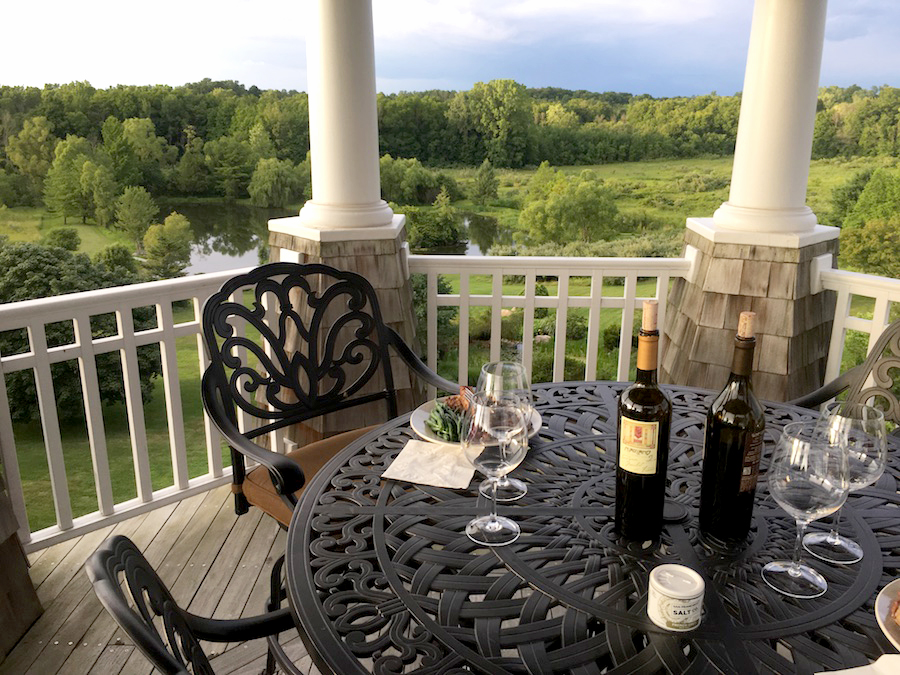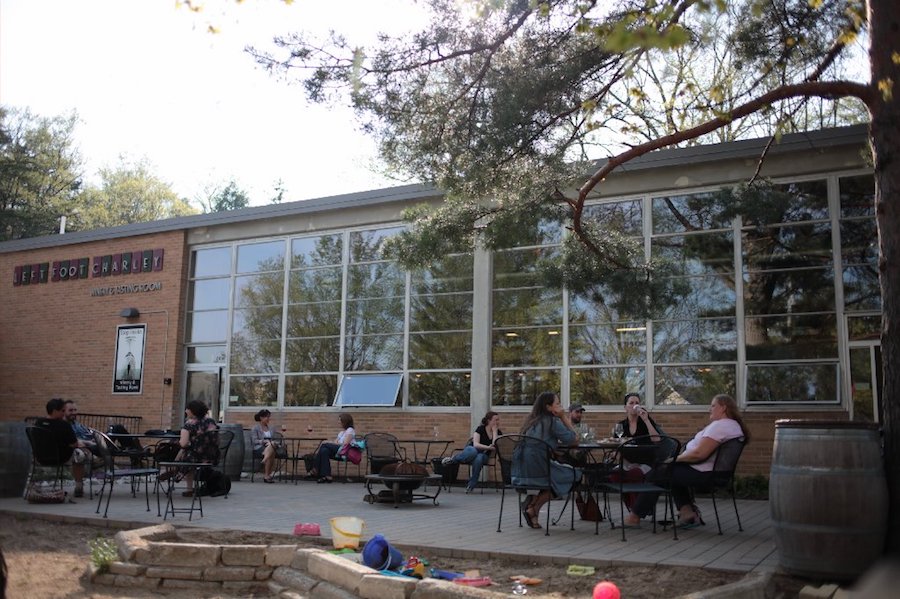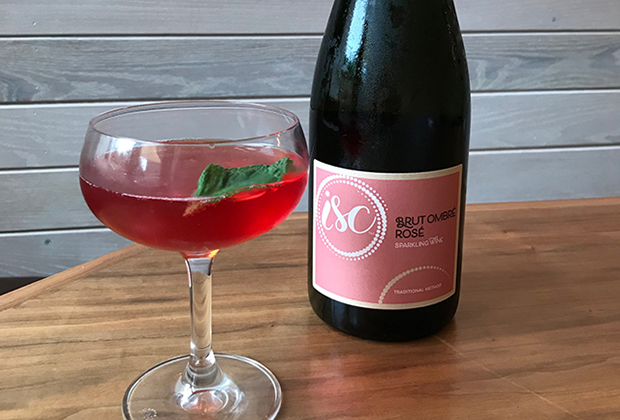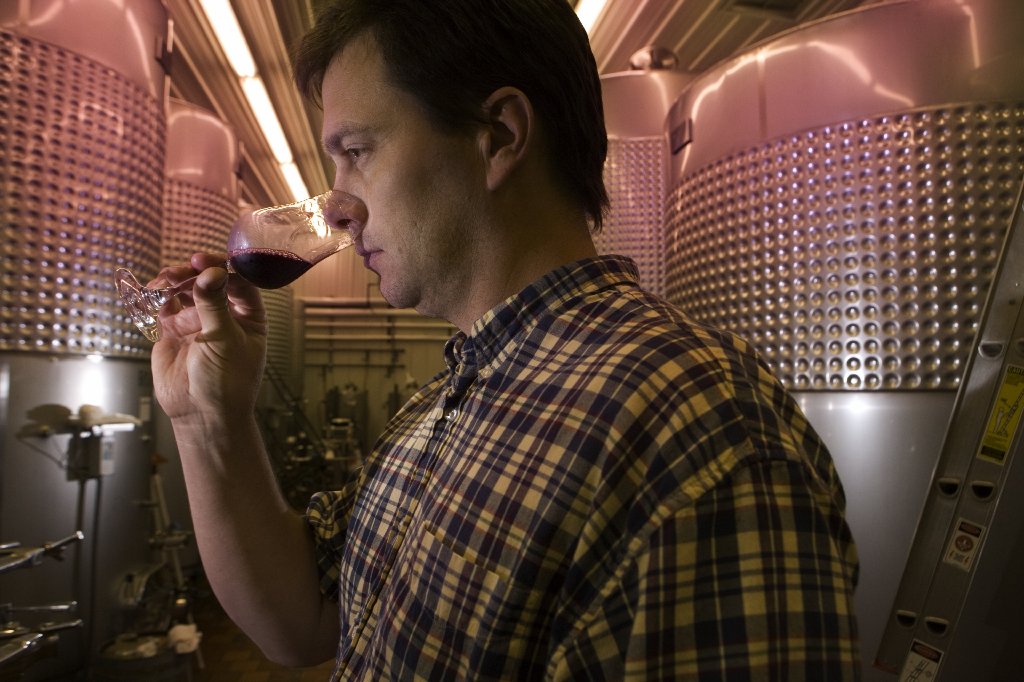Some diners who tried the “Alinea 2005-2010” retrospective menu at Grant Achatz’s Next last summer probably recognized courses six and seven. A reprisal of a 2009 dish of butter-poached skate on sliced bananas was followed by the famous Hot Potato, Cold Potato — a marriage of cold potato soup and hot potato balls.
But probably no one could have guessed the wine pairing for both dishes: Avonlea Vineyard 2012 barrel-fermented chardonnay from Wyncroft Wines in — wait for it — Pullman, Michigan.
Next’s sommelier and floor manager Joao Alves De Sa knew it was risky to serve a Michigan wine at one of the city’s most exclusive restaurants. But he was captivated by the wine’s balance and remarkable likeness to the burgundy styles hailing from France, with bold fruit flavors that complemented the potato’s classic comforts and helped the skate dish explode on the tongue.
“I try to run away from the expected with pairings,” Alves De Sa says. “I knew I was putting myself in a position to be exposed to criticism. I expected a lot of people to reject the wine.”
Just one table did, but the majority of diners loved it; Alves De Sa even made believers out of the non-chardonnay drinkers. Several of them have made the 90-mile pilgrimage to Pullman to sample more of winemaker James Lester’s limited-production portfolio of wines made from estate-grown grapes on the Lake Michigan Shore and nearby Fennville.
“It’s what Jim has been trying to do for the last several years — show a different perspective to Michigan wines,” Alves De Sa says. “This is a hard place to produce wine. It’s cold and snows a lot. If you have good hands and passion, you can make something special, and that’s what he’s doing.”

Lester has been making Old World-style wine in southwestern Michigan since the early 1980s. He started with test batches in his basement, using noble grapes he bought for $2.25 apiece from Dr. Konstantin Frank, a pioneering Finger Lakes winemaker.
“What shocked me was how much my first little batches tasted like European wine,” Lester says. “I knew it had to be something about the grapes that grow here, since I didn’t know what I was doing.”
Three hours north in Traverse City, winemaker Ed O’Keefe at Chateau Grand Traverse had already proven that European vitis vinifera grapes could work on the Lake Michigan coastline. For years, his grapes have yielded some world-class rieslings. But the vast majority of winemakers were growing concord or French-American hybrid grapes to turn into sweet, fruit-juice wines meant to lure Michigan tourists to their tasting rooms.
The market for higher-end American rieslings and lighter burgundy-style reds and whites simply wasn’t there. “People were after those big reds and buttery chardonnays from California,” Lester says.
Wyncroft debuted barrel-fermented chardonnay in 1987. It won gold at the International Eastern Wine Competition and caught the attention of a few fine-dining Chicago chefs who were early adopters of the local-first movement. Jean Joho at Everest, Michael Foley at Printer’s Row, and Charlie Trotter were some of the first to carry Wyncroft pinot noir and chardonnay and establish a high-end customer base for Lester, who struggled to create a market in his home state.
These days, restaurants from Elske to Bad Hunter, Parachute, S.K.Y., and Daisies carry wines from Wyncroft and Marland, Lester’s more affordable label that blends grapes from various Southwest Michigan vineyards. He estimates a dozen of the more than 150 wineries in Michigan are making world-class wine, including several Traverse City wineries like Left Foot Charley, Black Star Farms, and Mari Vineyards.
But they’ve yet to reach a critical mass to win broader buy-in. “It’s hard to make a living the way we’re doing it,” Lester says. “It’s no mark against them, but a lot of Americans are not all that tuned into fine European table wines.”

Adding to the challenge is the sheer vastness of the Midwest, which makes the region difficult to define from a winemaking perspective. “It’s physically the size of Europe,” says Keith Whitten, beverage director and general manager at Daisies, which counts more than a dozen Midwestern wines on its domestic, 45-bottle list. “The Midwest means so many things — rolling corn fields and that — but if we re-conceptualize and focus on Great Lakes wine, now we’re talking about things that actually impact viticulture, like terroir.”
What Great Lakes wines bring to the table, Whitten says, is a lot of the characteristics beverage directors and somms love about Old World styles from continental Europe: higher acidity, lower ABV, and food friendliness in spades.
One Illinois winemaker that’s cropping up on the wine list at restaurants like Longman & Eagle, Sepia, and Anker is Illinois Sparkling Co. The Utica-based business makes sparkling bruts and rosés in the traditional method from North American and French hybrid grapes, like St. Pepin and Marechal Foch. For the past two and a half years, almost half of its production has gone to Publican Tavern at O’Hare International Airport.
“When I put Publican Tavern’s wine list together, [O’Hare food service provider] HMSHost was like, ‘Are you fucking crazy? We only have space for one sparkling by the glass,’” says One Off Hospitality partner Eduard Seitan. “The first year, we sold 252 cases of ISC’s brut. They had to increase production and stop selling to other places, but it was such an opportunity for a small-production winemaker to have an Illinois wine at O’Hare.”

Seitan is a big believer in Midwestern wines, having poured them off and on at Blackbird for almost 20 years. He’s also served as a judge in the Midwest Wine & Spirits Competition for the past eight. He puts the Midwestern wine industry on track with where Oregon’s Willamette Valley was 25 years ago, when skeptics said it was too cold for world-class pinot noir.
But he doesn’t think the demand for Midwestern wine is growing nearly as fast as it should in a market that’s embraced local fare. “Most restaurants are afraid people won’t buy it,” he says. “They’d rather buy stuff that sells easily. Like, why would I allocate man hours to sell this Chateau Grand Traverse gamay — which is fantastic — when I can sell this Argentine malbec to anyone? It’s as much laziness as comfort, and you see it across the supply chain.”
The local wine narrative is a natural fit for intensively local restaurants like Daisies, where chef Joe Frillman sources a lot of his produce from his brother’s farm in Prairie View. But it does require more consumer education than, say, selling someone a Sonoma Valley cabernet.
The good news is, more Chicago distributors are adding local wineries to their portfolios as interest increases. Whitten sources his mostly Michigan and Ohio wines from five different distributors. One of them, Cream Wines, added Wyncroft to its portfolio a little over a year ago, just in time to host a tasting that sold Alves De Sa on the Avonlea 2012 chardonnay.
“People don’t like what they don’t know; their first instinct is to reject it,” Alves De Sa says. “During staff training I stressed that this wine needed to be explained to set guest expectations. I have the margins to do a lot at Next; the bigger challenge is finding ways to surprise people, and expose them to something special that they’ll remember.”



